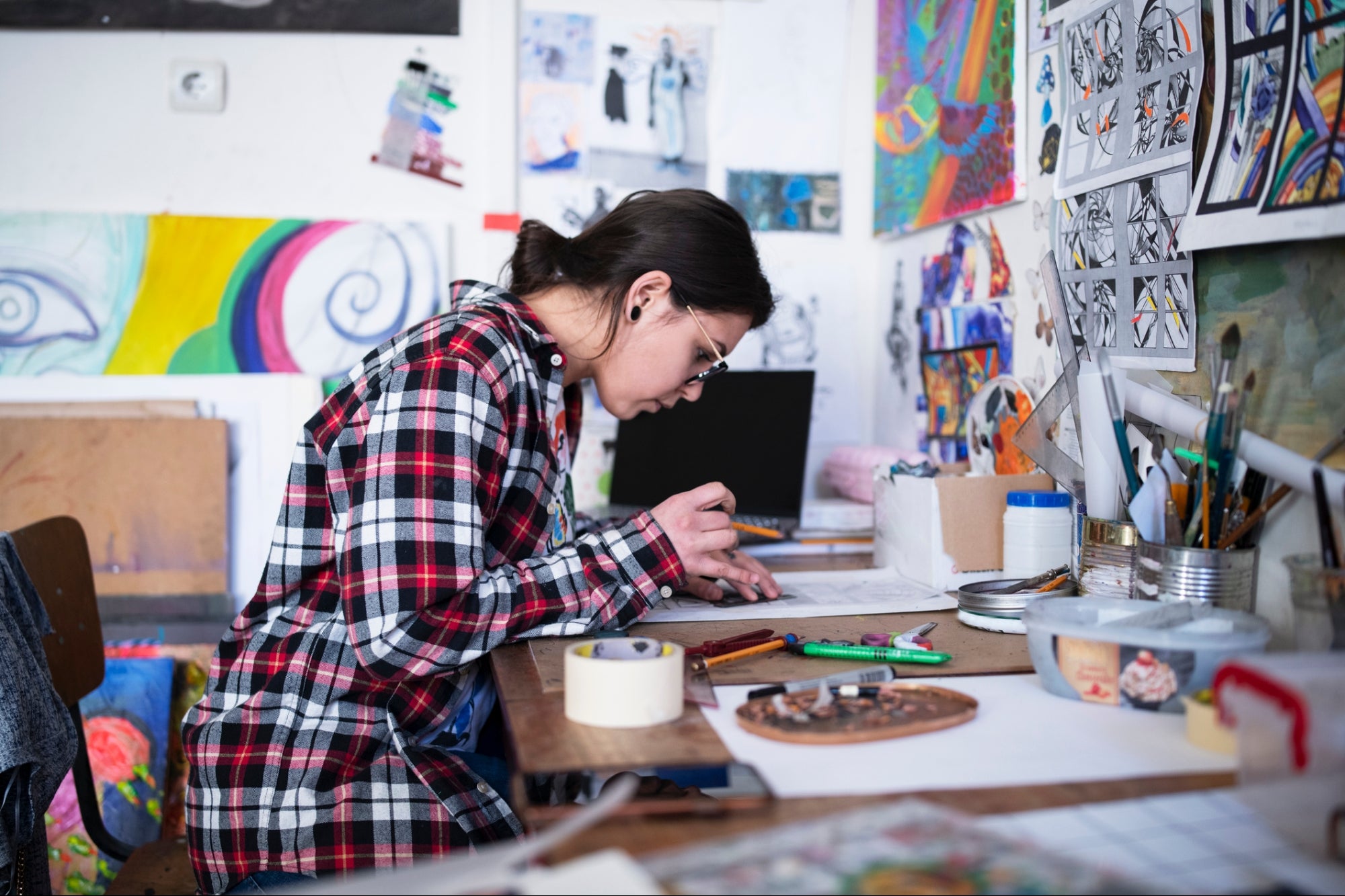
May
27, 2021
5 min read
Opinions expressed by Entrepreneur contributors are their own.
Artists and entrepreneurs see things that nobody else is capable of seeing. As an entrepreneur who has worked with more than 450 artists in many different capacities, I know for a fact that we all start with a vision. For both types of people, many possibilities come out of literally nothing: a blank canvas, a nondescript piece of marble, a space that hasn’t been developed or a niche that isn’t served right.
Here are five other ways entrepreneurs and artists are alike.
1. They know their ideas are worth money
The myth of the romantic and bohemian artist who isn’t equipped to create successful ventures as part of their careers is unfounded and dangerously perpetuated. While it is true that there are isolated cases, such as that of van Gogh, most talented artists have reaped the benefits that come from both their ability to create and their intuitive entrepreneurial spirit.
Take for example Michelangelo Buonarrotti, one of the most famous artists of the Renaissance. While his skills were undeniable, he relied on his willingness to collaborate with others, ability to charm patrons like the Medici (equivalent to any angel investor) and subsequently the church (more like venture capitalists) and to take enormous chances (he was afraid of failing when he was commissioned to paint the ceiling of the Sistine Chapel but took the job anyway.) Additionally, he moved from carving sculptures to painting frescoes. In the last years of his life, he even took the job of restoring Saint Peter’s in the Vatican, pretty much operating as an architect. By the time of his death, Michelangelo left behind a fortune of 50,000 florins, which is equivalent to $50 million today.
2. They depend on their creativity
Businesses succeed or fail depending on how creative their leaders are. When a founder is creative, they can come to the market with the most innovative companies, find solutions to big and small problems, pivot when necessary and adapt to current circumstances.
Artists also depend on their creativity more than anything. They have to come up with creations that are original and that appeal to a certain group of collectors. Like in every industry, there is also the case of artists who don’t possess the greatest artistic talent but are instead full of ideas, creativity and business savvy.
Was Steve Jobs the greatest coder or programmer? No. But he was a great visionary and marketing creative who could figure out how to make the impossible happen. Was Andy Warhol the greatest painter? No. But he was a brilliant executor of ideas.
Related: 5 Ways to Boost Creativity in Your Business
3. They trust their intuition
Every human being is fully intuitive, but some of us rely on intuition much more than others. Without intuition, it is very hard to survive as a business owner or as an artist.
Good entrepreneurs are guided by gut feelings. The more we use this skill, the better we get at learning to recognize its signals. Whether it is pursuing an investment opportunity or instinctively knowing what the next move in front of a canvas will be, artists and entrepreneurs are aware of their sixth sense and avoid second guessing it.
Related: Is There Room for Intuition in Business?
4. They are comfortable with ambiguity
Being an artist and being an entrepreneur has a lot to do with managing uncertainties. For both groups, ambiguities are opportunities for change or to tap into new revenue streams. It is our ability to adapt, to change quickly and embrace the “not knowing” that allows us to always adjust the course even in front of the thorniest situations.
For example, the great Spanish artist Joan Miro moved through many different phases in his career — from the certainty of painting the portraits of sitters who posed for him, to the point where he just worked with abstraction and amorphous forms subject to interpretation. Miro was known for repeatedly saying that he never knew what was going to happen or what he’ll end up doing when in front of a canvas.
5. They are interdisciplinary thinkers
To succeed as an artist or an entrepreneur, one must connect the unseen dots all the time. That can only happen when one is paying attention to a variety of fields and being curious enough to research aspects that seem interesting or obscure.
The most meaningful connections in business and art are those that come from the merger of unrelated disciplines. Mixing sports medicine and technology, for example, leads to the creation of wearable tech that measures steps, heart rate, sleeping cycles and other important metrics for athletes who want to improve their health.
Likewise, the most interesting works of art are those where the artist has been developing a variety of interests. There is a reason why the Mona Lisa isn’t randomly the most famous artwork in the world. It took Leonardo Da Vinci more than four years to finish it, and that iconic figure in that small panel is the culmination of his many years studying anatomy, the interaction of lights and shadows, math and geometry, physics and even human psychology.
Whether you are an artist or an entrepreneur, these skills are present in people who are innovative, have a tolerance for risk and uncertainty, are paying full attention to their surroundings and are willing to handle operations in a nimble and efficient way.
Related: 8 Tips For Entrepreneurs To Fight Uncertainty In Their Life


